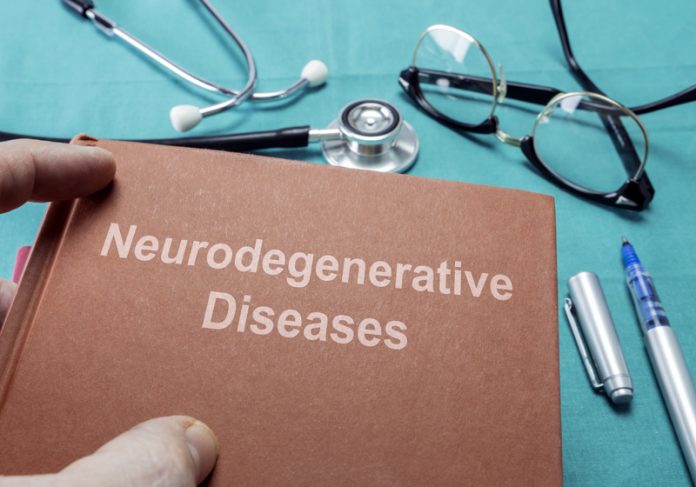The vital work of the National Institute on Deafness and Other Communication Disorders (NIDCD) and The National Institute of Neurological Disorders and Stroke (NINDS) are explored here by Open Access Government, with a special focus on neurodegenerative disorders
By way of an introduction, The National Institute on Deafness and Other Communication Disorders (NIDCD) is part of the National Institutes of Health (NIH) in the United States. NIDCD essentially supports and conducts research in the normal and disordered processes of hearing, taste, smell, voice, balance, speech and language.
Dr Judith Cooper, Ph.D., the current Acting Director, NIDCD sums up the work of the organisation extremely well, which has been running for over 30 years: “The National Institute on Deafness and Other Communication Disorders (NIDCD) has supported basic and clinical research and research training on communication and sensory disorders. As we head toward new frontiers in scientific discovery and precision medicine, the NIDCD is well positioned to support innovative studies to produce more sensitive, effective and individually tailored interventions for communication disorders.”
Hearing loss research
The current Acting Director goes on to reveal that the NIDCD’s robust programme of basic and clinical research focuses, in part, on the identification of genes involved in hearing loss to lead to earlier diagnosis and treatment, as well as new therapies. These fascinating areas of the NIDCD are explained by Dr Judith Cooper in her own words.
“Nearly 30 million adults in the United States could benefit from using hearing aids, but only one in four has used them. The NIDCD supports innovative clinical and translational research to lay the foundation for making hearing health care more accessible and affordable. Current research includes identifying barriers to care and assessing novel service delivery and screening models.
“Researchers are also applying cochlear implant technology to develop other neural prostheses. These devices will, for example, provide a sense of hearing for people whose auditory nerve is removed or damaged; normalise balance by electrically stimulating the vestibular nerve; and help patients with severe speech and physical impairments express themselves using speech synthesised from brain-computer interfaces.”
“While there is currently no cure for Rett syndrome, treatment today focuses on the management of symptoms, plus medication to treat breathing irregularities and motor difficulties, as well as antiepileptic drugs to control seizures. It is said that occupational therapy, physiotherapy and hydrotherapy may prolong mobility.”
Voice, speech and language
Another aspect of NIDCD research aims to improve the identification and treatment of voice, speech and language disorders such as specific language impairment, spasmodic dysphonia and stuttering. On the NIDCD website, Dr Judith Cooper details further aspects of the ongoing research where voice, speech and language are concerned.
“Other ongoing research is focused on ways to improve communication in children with autism spectrum disorder (ASD), including the 25 to 30% of children with ASD who remain functionally non-verbal beyond age five. The NIDCD has long supported the NIH Autism Centers of Excellence Program, which funds large research projects, some of which focus on developing effective interventions to help children with ASD better communicate.
“NIDCD-supported research also addresses voice, The vital work of the National Institute on Deafness and Other Communication Disorders (NIDCD) and speech, and language impairments linked to injury, stroke, and neurodegenerative disorders such as Parkinson’s disease and amyotrophic lateral sclerosis (ALS). These communication problems – such as aphasia, dysarthria, and apraxia – often lead to increased isolation and poor quality of life.”
Neurodegenerative disorders – Rett syndrome
Picking up on the mention above by Dr Judith Cooper concerning neurodegenerative disorders, we know there is a further example of this because research around Rett syndrome is conducted by The National Institute of Neurological Disorders and Stroke (NINDS) and other institutes of the National Institutes of Health (NIH).
NINDS seeks out fundamental knowledge about the brain and nervous system and to use that knowledge to reduce the burden of neurological disease. On Rett syndrome, for example, we know that the discovery of the gene for this in 1999 provides a basis for further genetic studies in the field. We find out on the NINDS website that understanding the cause of this disorder is essential “for developing new therapies to manage specific symptoms, as well as for providing better methods of diagnosis.”
Going into further detail, it is worth pointing out that Rett syndrome is a childhood neurodevelopmental disorder that primarily affects females. The first symptom
tends to be the loss of muscle tone and other early symptoms can include a slowing of development, diminished eye contact and problems crawling or walking. As the syndrome progresses, a child will lose the use of their hands and the ability to speak. Unfortunately, the inability to perform motor functions is possibly the most debilitating feature of Rett syndrome, interfering with each body movement, including speech.
While there is currently no cure for Rett syndrome, treatment today focuses on the management of symptoms, plus medication to treat breathing irregularities and motor difficulties, as well as antiepileptic drugs to control seizures. It is said that occupational therapy, physiotherapy and hydrotherapy may prolong mobility. Special equipment and aids such as braces to arrest scoliosis, splints to modify hand movements may be required by some children.
NIH: Supporting basic medical research in the U.S today Looking at the wider picture, we know that NINDS has a long history of supporting the research and development of gene therapies for neurological disorders and that their work requires a balance of basic, translational and clinical research. The NIH supports most basic medical research in the U.S today, although it is worth mentioning that each NIH Institute and Centre has a well-defined mission with respect to disease, indeed, a number of NIH components support complementary programmes of basic neuroscience research that advance the missions of all concerned.
References
https://www.nidcd.nih.gov/about
https://www.ninds.nih.gov/
https://www.ninds.nih.gov/Disorders/All-Disorders/Rett-Syndrome-Information-Page
Open Access Government
editorial@openaccessgovernment.org
www.openaccessgovernment.org
www.twitter.com/OpenAccessGov











